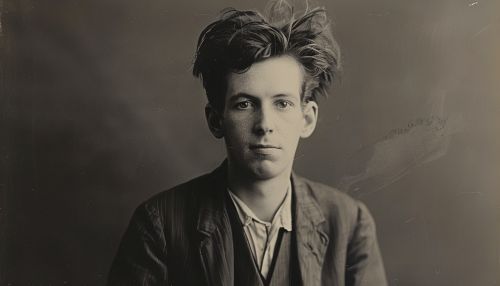John Cage
Early Life
John Milton Cage Jr. was born on September 5, 1912, in Los Angeles, California. His father, John Cage Sr., was an inventor, and his mother, Lucretia "Crete" Harvey, worked as a journalist for the Los Angeles Times. Cage described his mother as a woman of "infinite patience and love." His father, on the other hand, was described as an "eccentric" who often experimented with different professions.


Cage's interest in music began at an early age. He was taught piano by his aunt, Phoebe Harvey, and later studied music theory with Richard Buhlig, a renowned pianist and teacher. Despite his early exposure to music, Cage did not initially aspire to be a composer. Instead, he had aspirations of becoming a writer and spent much of his youth writing stories and poems.
Education and Early Career
In 1930, Cage enrolled at Pomona College in Claremont, California, where he studied music and philosophy. However, he dropped out after two years, disillusioned with the college's emphasis on the Western canon. He then traveled to Europe, where he studied with Arnold Schoenberg, a pioneering composer of the Second Viennese School. Cage's studies with Schoenberg had a profound impact on his approach to composition, and he would later describe Schoenberg as "the most important teacher I have ever had."
Upon returning to the United States, Cage began to establish himself as a composer and music theorist. He composed a series of works for prepared piano, a technique he invented that involves placing objects on the strings of a piano to alter its sound. These works, which include "Sonatas and Interludes" and "The Perilous Night," are considered some of Cage's most significant contributions to 20th-century music.
Experimental Music and the Avant-Garde
In the 1950s and 1960s, Cage became associated with the avant-garde movement in music and the arts. He was a central figure in the development of aleatoric music, which involves elements of chance or unpredictability. His most famous piece, "4'33"," is a composition in which the performer does not play their instrument for the duration of the piece, instead allowing the ambient sounds in the performance space to serve as the music.
Cage's work during this period was often controversial, and he was frequently criticized for challenging traditional notions of what constitutes music. However, his ideas have had a lasting impact on the field of music and have influenced a wide range of composers and artists.
Later Life and Legacy
Cage continued to compose and perform until his death in 1992. In his later years, he also became interested in visual art and produced a number of prints and drawings. His work in both music and visual art is characterized by a spirit of experimentation and a rejection of traditional artistic conventions.
Cage's influence extends beyond the realm of music. His ideas about chance and indeterminacy have influenced fields as diverse as dance, visual art, and philosophy. He is considered a pioneer of electronic music and sound art, and his work continues to be studied and performed today.
